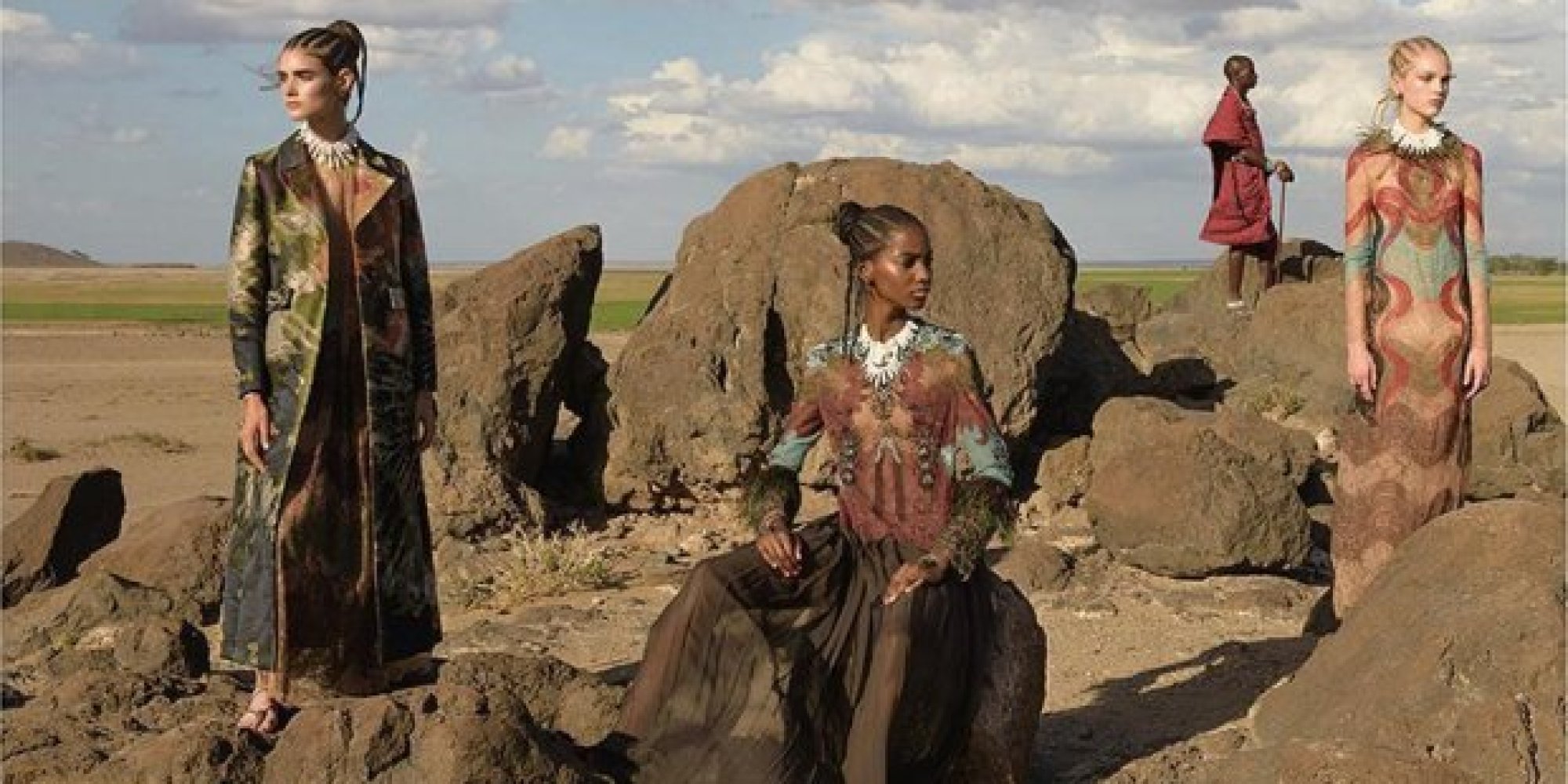 Written by Helen Cunningham
Written by Helen Cunningham
This year’s fashion week may have been “current” in terms of the styles shown on the walkway, but in terms of racial diversity and representation, it was stuck in the 19th century. An analysis by Business of Fashion revealed that a ridiculous 79% of models who walked at the spring/summer 2016 fashion weeks were white. That didn’t leave much room for models of color.
Only 10% of models on the runway were black, 6% were Asian, 2% were Hispanic, and 2.3% were “other”, which included models of Indian and Middle Eastern descent. This gross lack of representation exposes all kinds of racism in the fashion industry, including tokenism, appropriation, and the reenforcement of the racist misconception that beauty can only be one thing: tall, thin, and white. According to Carole White, an agent who managed Niaomi Campbell’s career for 17 years, a lot of the racist casting come down to what the designers think consumers will buy. “I think clients have this perception that black girls do not sell products, which goes way back to the 50’s. I think it’s engrained in every magazine editor. There are more products for blonde and blue-eyed girls. Everything is geared to that.”
Additionally, the fashion industry doesn’t seem to think black customers will buy their products, so they don’t try to represent black people in their shows. This stems from a deeper racist and classist assumption that perpetuates the idea that the classic arts, such as fashion, are reserved for white people. Even more apparent is the fashion industry’s blatant use of token diversity. Any given show might feature anywhere from no models of color to around ten, who are lost in a sea of white models that fit the European beauty ideal. In an attempt to remedy this, Niaomi Campbell, Iman, and Bethann Hardison have started a campaign aimed at ending racism in the fashion industry.
They identify the fashion houses which “consistently use one or no models of color” in their runway shows, such as Marc Jacobs, Victoria Beckham, Calvin Klein, Donna Karan and Rodarte, and write them a letter. “No matter the intention,” their letter says, “the result is racism.” Plenty of models of color have spoken out about tokenism in the industry as well. Nadja, a model who has been the token black girl in many shows said, “I would love to be booked for shows…because I am me – for my personality, for the person, for the model I am and not because I will be the only black girl for the show.” Not only are there limited spots for models of color in the fashion industry, but the standards are set much higher.
Models of color, particularly black models, have to be “flawless” in order to even be considered for casting, while white models are allowed to look a little more “quirky”. Even models of color who are lucky enough to be cast in a professional show experience subtle mirco-aggressions and inequalities, enough so that they might start to feel that they are an inconvenience. According to model Nykhor Paul, who recently wrote a righteous rant on Instagram about how sick she is of apologizing for being black, professional shows aren’t usually prepared to work with non-white models. “Why do I have to bring my own makeup to a professional show when all the other white girls don’t have to do anything but show up wtf!” she said. “Don’t try to make me feel bad because I am blue black it’s 2015, go to Mac, Bobbi Brown, Make Up For Ever, Iman Cosmetics, Black Opal, even Lancôme and Clinique carry them plus so much more. There’s so much options out there for dark skin tones today.”
Lastly, lack of representation leads to rampant cultural appropriation by fashion houses. Valentino recently used almost entirely white models in their “Africa themed” fashion week show. Each model sported cornrows and wore dresses made of feathers and skins or carried a handbag affixed with a tribal mask.


The show was described by Valentino as “primitive” and “tribal” and was created to represent Africa as “vibrant, as throbbing, as imperfect purity.” Unfortunately, it seems as though the fashion industry supports the racist rhetoric that Africa is a monolith stuck in time that can only be brought into the 21st century through white saviorism. Great

